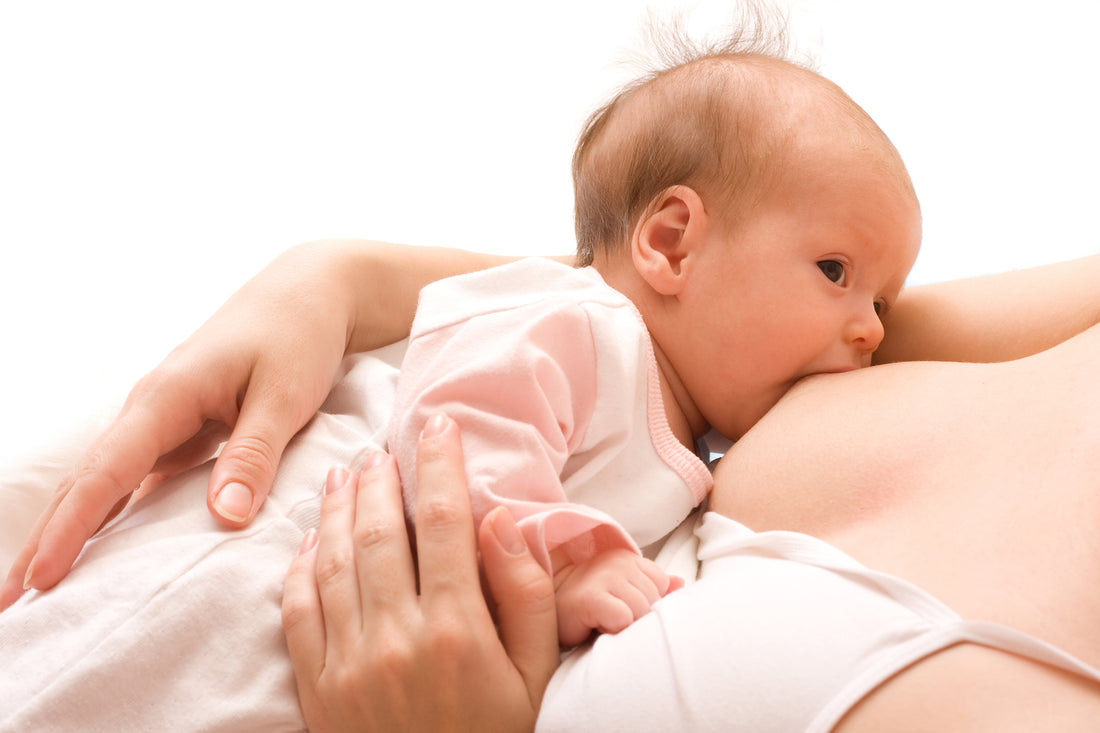One reason breastfeeding has gotten the reputation of being so much work is that many mothers use feeding positions that cause muscle strain and require supporting baby’s weight with their arms for long periods. Now there is an alternative.
 In the research she conducted for her PhD thesis, British midwife Suzanne Colson analyzed the effects of gravity on breastfeeding in 93 videotaped feeding sessions of British and French mothers during the first month of life. After scrutinizing these videos, Colson identified 20 inborn reflexes babies use to get to the breast, latch on, and feed. These reflexes are triggered best when baby feels light pressure against her chin, torso, hips, legs, and feet. They can be triggered when a mother breastfeeds sitting up or lying on her side—the breastfeeding positions traditionally taught—but Colson’s research found that in these positions, gravity makes breastfeeding more challenging.
In the research she conducted for her PhD thesis, British midwife Suzanne Colson analyzed the effects of gravity on breastfeeding in 93 videotaped feeding sessions of British and French mothers during the first month of life. After scrutinizing these videos, Colson identified 20 inborn reflexes babies use to get to the breast, latch on, and feed. These reflexes are triggered best when baby feels light pressure against her chin, torso, hips, legs, and feet. They can be triggered when a mother breastfeeds sitting up or lying on her side—the breastfeeding positions traditionally taught—but Colson’s research found that in these positions, gravity makes breastfeeding more challenging.
When the study mothers tried to breastfeed sitting up or lying on their sides, gravity pulled their babies’ bodies away, creating gaps between them. Many babies became frustrated and upset when their feeding triggers were missing. One baby of an upright mother began batting at the breast, a reflex Colson refers to as “arm cycling.” This mother finally gave up, assuming her baby did not want to breastfeed. The pull of gravity caused other babies to arch away and fuss, making attachment difficult. More upright or side-lying mothers found breastfeeding to be a struggle.
When mothers used what Colson calls laid-back breastfeeding(mothers leaning back with all body parts well supported and their babies lying tummy down on their semireclined bodies), the dynamics were very different. Gravity kept their babies’ bodies securely against theirs so no gaps could form and feeding triggers were continuous rather than interrupted. There were far fewer breastfeeding struggles, and the mothers perceived breastfeeding more positively. One reason may be that in laid-back positions, mothers were freed from supporting their babies’ weight with their arms. One of these mothers said, “Breastfeeding is so easy. I wish more of my friends were doing it.”
Colson concluded that human babies, like hamsters and puppies, feed best on their tummies. From a practical standpoint, breastfeeding in laid-back positions is a lot less work.  Thanks to gravity, baby’s chin, torso, legs, and feet automatically stay in contact with mother’s body and mother’s body supports baby’s weight throughout the feeding.
Thanks to gravity, baby’s chin, torso, legs, and feet automatically stay in contact with mother’s body and mother’s body supports baby’s weight throughout the feeding.
Especially during the early weeks, using laid-back positions reduces the steps mothers need to remember about getting their baby latched on deeply. Good breastfeeding dynamics occur almost automatically, allowing mothers to focus on their baby instead of what they need to do next. With gravity helping instead of hindering breastfeeding, the same reflexes (such arm cycling) that can get in the way in other positions actually make it easier for baby to get to the breast and attach deeply. Having at least one hand free also makes it easier for mothers to help their newborn or just to stroke and enjoy her. If desired, variations of laid-back breastfeeding can also be used when mother and baby are out and about. Mothers can just scoot their hips forward in their chair and lean back.
For more information, see Colson’s website at www.biologicalnurturing.com and see her DVD, “Biological Nursing: Laid-Back Breastfeeding.”
Reference
Colson, S. D., Meek, J. H., & Hawdon, J. M. (2008). Optimal positions for the release of primitive neonatal reflexes stimulating breastfeeding. Early Human Development, 84(7), 441-449.


